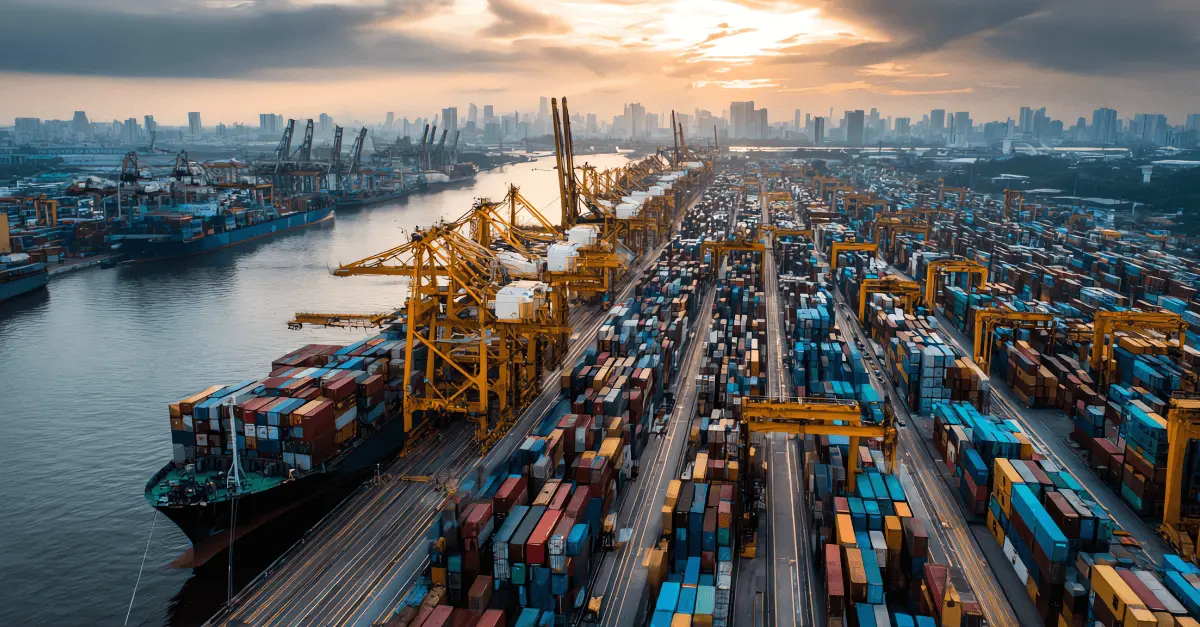New U.S. Semiconductor China Trade and Export Ban
U.S continues to restrict China's ability to enhance military technologies

On Oct. 7, the U.S. Department of Commerce's Bureau of Industry and Security (BIS) announced that it is implementing a series of targeted updates to its export controls further restricting China's ability to purchase and manufacture particular technologies, including supercomputing, semiconductor production equipment and AI that can enhance and modernize its military.
China's top memory chipmaker Yangtze Memory Technologies Co. (YMTC) and 30 other Chinese organizations were added to the "entity list", and will now be subject to sanctions. Since the announcement, Apple has put on hold plans to use YMTC’s NAND flash memory in its iPhones, and KLA Corp. and Lam Research Corp., have paused support of already installed equipment and temporarily halted the installation of new equipment at YMTC.
ASML, has told its U.S. employees to stop installing or servicing equipment at any Chinese chip factory while it sorts through the new rules. Another equipment provider, Applied Materials, said the export restrictions will prevent it from making sales of roughly $400 million in the fourth quarter. Other U.S. and Western suppliers also appear to be cutting ties to Chinese chip factories. South Korean memory chipmaker SK Hynix said it got authorization from the United States to receive goods for its chip production facilities in China without additional licensing.
This move builds upon prior U.S. regulatory actions aimed to curb China’s growth as part of the U.S. national security and foreign policy. The U.S. – China Tech War, has been escalating in the past 5 years leading to U.S. placing various sanctions on China and investing billions in boosting its domestic manufacturing capabilities to ensure technology dominance with the passage of the CHIPS and Science Act of 2022.
The new BIS multi-tiered rule implements a number of updates and additions to technology controls relating to China that became effective on Oct. 12th and will be implemented in phases through Oct. 21, 2022.
Specifically, the rule:
- Added and removed entities to the BIS’s Unverified List (UVL). Electronic Export Information (EEI) must be filed in the Automated Export System (AES) for all exports of tangible items subject to the EAR when a party or parties are listed on the UVL.
- Added certain advanced and high-performance computing chips and computer commodities that contain such chips to the Commerce Control List (CCL);
- Adds new license requirements for items destined for a supercomputer or semiconductor development or production end use in the PRC;
- Expands the scope of the Export Administration Regulations (EAR) over certain foreign-produced advanced computing items and foreign-produced items for supercomputer end uses;
- Expands the scope of foreign-produced items subject to license requirements to twenty-eight existing entities on the Entity List that are located in the PRC;
- Adds certain semiconductor manufacturing equipment and related items to the CCL;
- Adds new license requirements for items destined to a semiconductor fabrication “facility” in the PRC that fabricates ICs meeting specified. Licenses for facilities owned by PRC entities will face a “presumption of denial,” and facilities owned by multinationals will be decided on a case-by-case basis. The relevant thresholds are as follows:
- DRAM memory chips of 18nm half-pitch or less;
- NAND flash memory chips with 128 layers or more.
- Logic chips with non-planar transistor architectures (I.e., FinFET or GAAFET) of 16nm or 14nm, or below; - Restricts the ability of U.S. persons to support the development, or production, of ICs at certain PRC-located semiconductor fabrication “facilities” without a license;
- Adds new license requirements to export items to develop or produce semiconductor manufacturing equipment and related items; and
- Establishes a Temporary General License (TGL) to minimize the short-term impact on the semiconductor supply chain by allowing specific, limited manufacturing activities related to items destined for use outside the PRC.
What is the Export Administration Regulations - EAR
The U.S. Department of Commerce administers the Export Administration Regulations (EAR) regulates the export of “dual-use” items. These items include goods and related technology including technical data and technical assistance, which are designed for commercial purposes but could have military applications, such as computers, aircraft, and pathogens.
The list of EAR-controlled items (the Commerce Control list, or “CCL”) can be found here.
The CCL categorizes these covered items into 10 broad categories:
- Nuclear Materials, Facilities and Equipment, and Miscellaneous
- Materials, Chemicals, Microorganisms, and Toxins
- Materials Processing
- Electronics
- Computers
- Telecommunications and Information Security
- Lasers and Sensors
- Navigation and Avionics
- Marine
- Propulsion Systems, Space Vehicles, and Related Equipment
What is the Unverified List (UVL)
The Unverified List (UVL) is a trade restriction list published by the United States Department of Commerce's Bureau of Industry and Security (BIS), consisting of certain foreign persons, entities, or governments which BIS has been unable to adequately verify that the entity has complied with the Export Administration Regulations (EAR) as determined by routine end-use checks conducted by BIS's enforcement arm.
Revisions to BIS’s Unverified List (UVL)
UVL Additions:
- Beijing Naura Magnetoelectric Technology Co., Ltd.
- Beijing PowerMac Company
- CCIC Southern Electronic Product Testing Co., Ltd.
- Chang Zhou Jin Tan Teng Yuan Machinery Parts Co., Ltd.
- Institute of Mineral Resources, Chinese Academy of Geological Sciences
- Chinese Academy of Science (CAS) Institute of Chemistry
- Chongqing Optel Telecom
- Chongqing Xinyuhang Technology Co., Ltd.
- Dandong Nondestructive Electronics
- DK Laser Company Ltd.
- Foshan Huaguo Optical Co., Ltd.
- GRG Metrology & Test (Chongqing) Co., Ltd.
- Guangdong Dongling Carbon Tech. Co., Ltd.
- Guangxi Yuchai Machinery Co., Ltd.
- Guangzhou GRG Metrology & Test (Beijing) Co., Ltd.
- Jialin Precision Optics (Shanghai) Co., Ltd.
- Lishui Zhengyang Electric Power Construction
- Nanjing Gova Technology Co., Ltd.
- Ningbo III Lasers Technology Co., Ltd.
- Qingdao Sci-Tech Innovation Quality Testing Co., Ltd.
- Shanghai Tech University
- Suzhou Sen-Chuan Machinery Technology Co., Ltd.
- Tianjin Optical Valley Technology Co., Ltd.
- University of Chinese Academy of Sciences
- University of Shanghai for Science and Technology
- Vital Advanced Materials Co., Ltd.
- Wuhan Institute of Biological Products Co., Ltd.
- Wuhan Juhere Photonic Tech Co., Ltd.
- Wuxi Hengling Technology Co., Ltd.
- Xian Zhongsheng Shengyuan Technology Co., Ltd.
- Yangtze Memory Technologies Co., Ltd.
UVL Removals
- Anhui Institute of Metrology
- Chuzhou HKC Optoelectronics Technology Co., Ltd.
- Hefei Anxin Reed Precision Co. Ltd.
- Hefei Institutes of Physical Science
- Jiutian Intelligent Equipment Co. Ltd.
- Suzhou Gyz Electronic Technology Co. Ltd.
- Suzhou Lylap Mould Technology Co Ltd.
- Wuxi Biologics Co., Ltd.
- Wuxi Turbine Blade Co., Ltd.
Key Take Away
Companies operating in advanced computing, supercomputing, and semiconductors, should carefully review the new rule and establish procedures to flag any possible direct or indirect dealings in or with China. In particular, companies should ensure they have visibility into their entire supply chain, final end users and end uses of their products.
The Z2Data Solution
Z2Data is a leading supply chain risk management platform that helps organizations identify supply chain risks, build operational resilience, and preserve product continuity.
Powered by a proprietary database of 1B+ components, 1M+ suppliers, and 200K manufacturing sites worldwide, Z2Data delivers real-time, multi-tier visibility into obsolescence/EOL, ESG & trade compliance, geopolitics, and supplier health. It does this by combining human expertise with AI and machine learning capabilities to provide trusted insights teams can act on to tackle threats at every stage of the product lifecycle.
With Z2Data, organizations gain the knowledge they need to act decisively and navigate supply chain challenges with confidence.


.svg)






